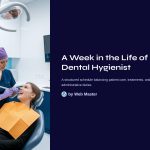 Dental hygienists play a pivotal role in shaping oral health outcomes through early diagnosis, patient education, and tailored care plans. With the increasing prevalence of periodontal disease and oral-systemic connections coming into focus, analyzing real-life patient case studies has become a powerful educational and practical tool. These case-based insights not only help in fine-tuning clinical judgment but also foster patient-centered strategies that lead to lasting behavioral changes.
Dental hygienists play a pivotal role in shaping oral health outcomes through early diagnosis, patient education, and tailored care plans. With the increasing prevalence of periodontal disease and oral-systemic connections coming into focus, analyzing real-life patient case studies has become a powerful educational and practical tool. These case-based insights not only help in fine-tuning clinical judgment but also foster patient-centered strategies that lead to lasting behavioral changes.
Recent updates from the American Dental Hygienists’ Association (ADHA) and the World Health Organization have emphasized the importance of preventive care and early intervention, especially in vulnerable populations. Studies also show that case-based learning improves critical thinking and enhances decision-making in clinical settings. As oral healthcare continues to integrate with overall health management, the experience and strategy behind each patient case can illuminate broader trends in patient compliance, interdisciplinary collaboration, and effective communication. This article explores six carefully selected case studies that demonstrate how dental hygienists navigate challenges to deliver better outcomes and greater patient satisfaction.

Understanding the Role of Case Studies in Dental Hygiene
Patient case studies serve as a microcosm of the larger healthcare ecosystem. They provide tangible examples of how theory translates into practice, revealing the nuances of diagnosis, patient behavior, and systemic barriers. These narratives not only enhance learning for students and professionals but also bring to light the real-life challenges faced in preventive dentistry.
Each case study typically follows a format that includes patient history, initial examination findings, risk assessment, treatment plans, patient education strategies, and follow-up outcomes. Through these documented journeys, dental hygienists can evaluate the effectiveness of interventions, adjust educational methods, and collaborate more effectively with dentists and specialists.

Case 1: Managing Severe Gingivitis in a Non-Compliant Teenager
A 16-year-old patient presented with swollen gums, bleeding during brushing, and poor oral hygiene. The initial assessment revealed a high plaque index and stage 1 gingivitis. The patient was reluctant to change habits, citing a lack of time and interest.
The hygienist initiated motivational interviewing techniques, incorporating visual aids to show the long-term impact of untreated gingivitis. After three sessions of scaling and root planing combined with tailored education, the patient began brushing twice daily. Follow-up results after six weeks showed a 70% reduction in gingival inflammation.
This case underscores the power of behavioral intervention and highlights the dental hygienist’s role as a health coach, not just a clinician.

Case 2: Reversing Periodontal Pockets with Consistent Maintenance
A 45-year-old smoker with a history of periodontitis exhibited probing depths of up to 7mm. Despite undergoing previous treatment, the patient had been non-compliant with maintenance visits. The dental hygienist created a 3-month supportive periodontal therapy (SPT) schedule combined with smoking cessation support.
By emphasizing personalized care, tracking progress, and integrating the patient’s physician into the care plan, the hygienist achieved a reduction of probing depths to under 4mm in six months. This collaborative care model improved both oral and systemic health indicators.

Case 3: Pediatric Fluorosis and Parental Education
A 7-year-old child showed mild fluorosis on the anterior teeth. Investigation revealed unsupervised use of fluoridated toothpaste and supplements. The hygienist employed a teach-back method with the parents, introducing proper dosing and brushing techniques for children.
Subsequent recall visits showed improved enamel appearance and no progression. This case highlights the preventive role dental hygienists play in pediatric care and parental guidance, often preventing costly restorative treatments.

Case 4: Xerostomia Management in a Cancer Survivor
An elderly female patient undergoing radiation therapy for breast cancer developed chronic dry mouth, increasing her risk for root caries. The hygienist introduced a multi-modal strategy including salivary stimulants, xylitol gum, fluoride varnish applications, and nutritional counseling.
Over a 12-week period, the patient’s oral comfort improved significantly and no new carious lesions were detected. This case shows how dental hygienists are vital to the supportive care network in oncology.

Case 5: Orthodontic Hygiene Challenges in Adolescents
Teen patients undergoing orthodontic treatment often present with plaque retention and white spot lesions. In this case, a 14-year-old with fixed braces had multiple decalcified areas.
The hygienist introduced a high-fluoride toothpaste regimen, prescribed chlorhexidine gel, and taught effective brushing techniques using an orthodontic brush. After three months, the white spot lesions began to remineralize, showing marked clinical improvement.
This highlights the importance of hygiene reinforcement and early intervention throughout the orthodontic process.
Building Clinical Confidence through Real-World Cases
Incorporating case studies into everyday dental hygiene practice not only improves care outcomes but also builds professional confidence. These scenarios teach critical skills such as communication, risk assessment, and patient empowerment. By closely observing patterns across different cases, dental hygienists can refine techniques, stay up-to-date with best practices, and contribute to a more holistic model of healthcare.
As dental hygienists continue to face diverse patient populations and complex oral-systemic issues, their role as frontline oral health advocates becomes even more crucial. Whether it’s through motivational counseling, preventive strategies, or interdisciplinary coordination, these professionals are essential to the journey toward lifelong oral wellness.
Tags
dental hygiene, patient case study, gingivitis treatment, oral health education, periodontal maintenance, pediatric dental care, fluorosis prevention, cancer supportive care, orthodontic hygiene, dental hygienist 
*Capturing unauthorized images is prohibited*



